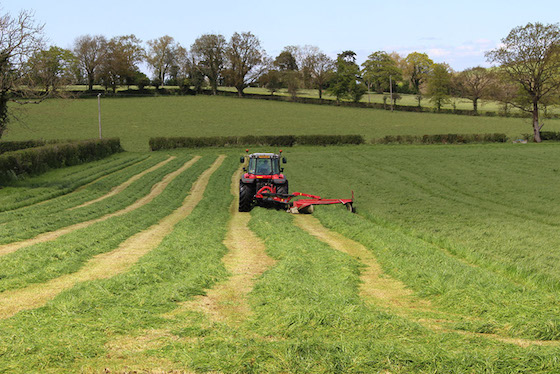Practical grassland advice following a disappointing spring
29th June 2020
Generally, first cuts are below average, particularly those cut in the latter half of May. Second cut regrowth has also been very slow. The result is many farmers, understandably, would like to see more silage in their clamps.
To be frank, 2020 has been an extremely difficult year for almost every farmer, and the recent drought has severely impacted livestock farms. Generally, first cuts are below average, particularly those cut in the latter half of May. Second cut regrowth has also been very slow. The result is many farmers, understandably, would like to see more silage in their clamps.
“Growth rates on the GrassCheck GB website are back to near normal after the rain,” says Philip Cosgrave, Grassland Agronomist at Yara. “How can we knuckle down and build up forage stocks? We need to do everything possible to ensure good growth in the months ahead.”
With better results needed now more than ever, we asked Philip for actionable advice for grassland over the next few months.
Q: What should farms using grazing do if their growth rates have responded to the rain, now that it’s finally here?
“It’s absolutely vital to monitor this closely. Maintain a 21 day rotation and keep residuals of 4cm at all times.”
Q: What if paddocks have gone stemmy?
“Pre-mow the paddocks to get them back on track. An alternative option is to target these paddocks for silage. Those with heavy covers – I’d say anything over 3,000 kg – should be cut as surplus bales. You can then maintain grass growth by keeping N + S applications up to date.”
Q: How should we effectively utilise slurry?
“Slurry should be applied whenever silage/surplus bales are taken off. Remember to keep ammonia emissions as low as possible. To do so, use low emission spreading equipment, like trailing shoe. If slurry is not available, then apply a NPKS quality compound fertiliser. We need to replace P and high K offtake from removing surplus bales.”
Q: What other actions can we take to stay productive?
“It’s not a bad idea to start looking for alternative ways to put tonnes of forage in the clamp. For example, buying standing crops of spring barley for wholecrop or direct drilling westerwolds into stubble for a late silage cut can help you make up some lost tonnes. Another option is to drill a forage brassica crop into stubble for grazing in autumn or winter.”
Q: Any other comments?
“As we’ve all seen in the last six months, the only consistent thing about our weather is its unpredictability. Don’t let it catch you out. Implement alternative plans to keep your farm effective and robust, despite the challenging situation we’re facing.”
For more advice on grassland nutrition, please visit www.yara.co.uk/crop-nutrition/grassland

